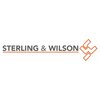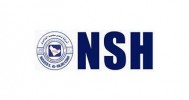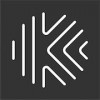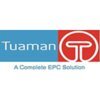Filter interviews by
Navayuga Engineering Company Planning Engineer Interview Questions, Process, and Tips
Navayuga Engineering Company Planning Engineer Interview Experiences
1 interview found
I applied via LinkedIn and was interviewed in Jul 2023. There were 2 interview rounds.
(2 Questions)
- Q1. Personal Details
- Q2. Name Residence Qualification hobbies experience etc
- Ans.
Residence: New York, Qualification: Bachelor's degree in Civil Engineering, Hobbies: Reading, Experience: 5 years in planning and scheduling
Residence: New York
Qualification: Bachelor's degree in Civil Engineering
Hobbies: Reading
Experience: 5 years in planning and scheduling
(12 Questions)
- Q1. In M20 what does M stands for
- Ans.
M stands for 'Mix' in M20.
M20 is a designation for a concrete mix with a compressive strength of 20 megapascals (MPa).
The 'M' in M20 represents the word 'Mix', indicating that it is a mix of cement, sand, and aggregate.
The number following 'M' in M20 denotes the compressive strength of the concrete mix.
Different grades of concrete have different compressive strength requirements, and the 'M' designation helps in identi
- Q2. M stands for Mix and 20 is compressive strength after 28 days
- Q3. Why do we need curing for concrete
- Ans.
Curing is necessary for concrete to ensure proper hydration and strength development.
Curing prevents moisture loss from the concrete, allowing it to maintain its desired water-cement ratio.
It helps in reducing shrinkage and cracking by providing a controlled environment for the concrete to cure.
Curing promotes the formation of calcium silicate hydrate (CSH) gel, which contributes to the strength and durability of concr...
- Q4. After casting...concrete loss it's moisture content in order to maintain moisture content we give water to concrete to gain early strength and also resist creep formation
- Ans.
Water is added to concrete after casting to maintain moisture content and achieve early strength and resist creep formation.
Adding water to concrete after casting helps to prevent excessive moisture loss.
Maintaining moisture content in concrete is important for proper hydration of cement particles.
Watering concrete can also help in reducing shrinkage and cracking.
By providing moisture, the concrete gains strength faste...
- Q5. Steps involved in concreting
- Ans.
The steps involved in concreting include site preparation, formwork, reinforcement, mixing, pouring, leveling, finishing, and curing.
Site preparation involves clearing the area and ensuring proper drainage.
Formwork is constructed to shape and support the concrete.
Reinforcement is placed to provide strength to the concrete structure.
Concrete ingredients are mixed in the correct proportions.
The mixed concrete is poured i...
- Q6. 1.Batching 2.Mixing 3.Transportation 4.Placing 5.Compaction & Finishing
- Q7. Allowable Height for Free fall for concrete
- Ans.
The allowable height for free fall for concrete depends on several factors.
The allowable height for free fall for concrete is typically specified by the project specifications or industry standards.
The height is influenced by factors such as the type of concrete mix, slump value, and the presence of reinforcing steel.
For example, for normal weight concrete with a slump of 3 to 4 inches and no reinforcing steel, the all...
- Q8. 1.5m in order to avoid segregation and bleeding
- Q9. Difference between segregation and bleeding
- Ans.
Segregation is the separation of coarse and fine particles in concrete mix, while bleeding is the upward movement of water in fresh concrete.
Segregation occurs when the coarse aggregates settle down due to gravity, resulting in a non-uniform distribution of particles in the mix.
Bleeding happens when excess water in the concrete mix rises to the surface, leaving behind a layer of water on top.
Segregation can lead to a d...
- Q10. In bleeding water comes out from concrete and in segregation aggregate separates from concrete
- Ans.
Bleeding and segregation are common issues in concrete construction.
Bleeding occurs when excess water in the concrete mixture rises to the surface, leaving behind a layer of water.
Segregation happens when the coarse aggregates separate from the rest of the concrete mixture.
Both bleeding and segregation can negatively impact the strength and durability of the concrete.
Proper mix design, adequate compaction, and appropri...
- Q11. Do you know about latence
- Q12. Yes sir....when water comes out from concrete along with a cement it makes a layer on the top of the concrete that layer we call latence....
Top trending discussions






Interview questions from similar companies

I applied via Naukri.com and was interviewed in Oct 2021. There was 1 interview round.
Interview Questionnaire
1 Question
- Q1. About simulation, GIS mapping, calculation of SR as per flow rate and potential, Integrated CNG stations, specification of MDPE, GI, welded riser, type of joint, specification of Fusion machine, and projec...
Interview Preparation Tips

I applied via Approached by Company and was interviewed in Feb 2022. There were 4 interview rounds.

(3 Questions)
- Q1. Why are you looking for a change?
- Q2. Why should we hire you?
- Q3. Tell me about yourself.
(1 Question)
- Q1. What was your current job profile? what did you use to do.
- Ans. I am site Engineer in Solar power generation system. Solar project I&C with documents after O&M with documents works.
(2 Questions)
- Q1. What are your salary expectations?
- Q2. Why are you looking for a change?
Interview Preparation Tips

I applied via Naukri.com and was interviewed in Jan 2023. There were 3 interview rounds.

(3 Questions)
- Q1. Asking to me...... Only civil engineering questions
- Q2. Only waste water treatment plants related questions
- Q3. What is hydro power test of DI pipes...?
- Ans.
Hydro power test of DI pipes is a method to check the strength and integrity of ductile iron pipes under pressure.
Hydro power test involves filling the DI pipes with water and pressurizing them to a specified level.
The test is conducted to ensure that the pipes can withstand the pressure they will be subjected to in actual use.
Leaks or deformations during the test indicate weaknesses in the pipes.
The test helps in iden...
(2 Questions)
- Q1. Only waste water treatment plants related questions
- Q2. RCC spun related question

I applied via Walk-in and was interviewed before Jan 2023. There was 1 interview round.
(2 Questions)
- Q1. Difference between lap length and development length
- Ans.
Lap length is the overlap of reinforcement bars in concrete, while development length is the length of bar required to transfer stress to concrete.
Lap length is used to ensure continuity of reinforcement across a joint or splice in concrete elements.
Development length is required to develop the full strength of the reinforcement bar and transfer it to the surrounding concrete.
Lap length is typically specified in terms ...
- Q2. Solid block size 400*400*200mm what is the weight and define
- Ans.
The weight of a solid block with dimensions 400*400*200mm depends on the material it is made of.
The weight can be calculated by multiplying the volume of the block by the density of the material.
Different materials have different densities, so the weight will vary depending on the material.
To calculate the volume, multiply the length, width, and height of the block.
To find the weight, multiply the volume by the density...

I applied via Company Website and was interviewed in Mar 2024. There were 9 interview rounds.
(4 Questions)
- Q1. This is information to company
- Q2. This is company sites through
- Q3. This company is highly growth
- Q4. This is responsible for the employee
(2 Questions)
- Q1. Bar bending shedule in this question
- Q2. What are you quality control
- Ans.
Quality control is a process used to ensure that products or services meet specified requirements and standards.
Quality control involves inspecting, testing, and evaluating products or services to ensure they meet quality standards.
It also includes identifying defects or deviations from specifications and taking corrective actions.
Quality control helps to prevent defects, improve processes, and enhance customer satisfa...
This is company at the high economy
Number system and latter
On basis of defined structure
(1 Question)
- Q1. The information to company
This check the soil testing
This is growth process in the employee
(1 Question)
- Q1. I like this with company
Interview Preparation Tips


(1 Question)
- Q1. About the CGD ?
(1 Question)
- Q1. About work experience ?
(1 Question)
- Q1. They asked me about Salary ?

I applied via Naukri.com and was interviewed in Nov 2021. There were 3 interview rounds.
Interview Questionnaire
1 Question
- Q1. Technical questions related pipeline
Interview Preparation Tips

I appeared for an interview in Jan 2025.
(4 Questions)
- Q1. What is the hydraulic gradient line?
- Ans.
The hydraulic gradient line is a line representing the total head of water at various points along a flow path in a hydraulic system.
It is a graphical representation of the total head of water in a hydraulic system.
It shows the energy level of water at different points along a flow path.
The slope of the hydraulic gradient line indicates the direction and rate of flow of water.
It is used in analyzing flow patterns and d...
- Q2. What are the methods for managing floods?
- Ans.
Methods for managing floods include structural measures, non-structural measures, and preparedness planning.
Structural measures include building dams, levees, and flood walls to control water flow.
Non-structural measures involve land-use planning, zoning regulations, and wetland preservation to reduce flood risk.
Preparedness planning includes early warning systems, evacuation plans, and community education on flood saf...
- Q3. What is prestress concrete?
- Ans.
Prestressed concrete is a type of concrete that has been compressed prior to being subjected to loads.
Prestressed concrete is created by introducing internal stresses in the concrete before it is subjected to external loads.
This compression helps to counteract the tensile stresses that the concrete will experience during use.
Prestressed concrete is commonly used in bridges, parking structures, and high-rise buildings.
E...
- Q4. What is Flood Wall?
- Ans.
A flood wall is a structure designed to prevent flooding by holding back water.
Flood walls are typically made of concrete, steel, or other strong materials.
They are commonly used along rivers, coastlines, and other areas prone to flooding.
Flood walls can vary in height and design depending on the level of protection needed.
Examples of flood walls include the Thames Barrier in London and the flood walls along the Missis
Interview Preparation Tips


(2 Questions)
- Q1. What is the hydrotest pressure? Ans:- 1.5 times of design pressure.
- Ans.
The hydrotest pressure is 1.5 times the design pressure.
Hydrotest pressure is the pressure applied to a vessel or pipeline to check for leaks or defects.
It is usually done before commissioning the system.
For example, if the design pressure is 100 psi, the hydrotest pressure would be 150 psi.
- Q2. Q:- What is the procedure for fit up inspection? Ans:- Base metal Classification, cleaning, Alignment, Root gap, root face, Bevel angle & mismatch or overlap.
- Ans.
The procedure for fit up inspection includes classification, cleaning, alignment, root gap, root face, bevel angle, and mismatch or overlap.
Classify the base metal
Clean the surface
Align the parts to be joined
Check the root gap and root face
Measure the bevel angle
Check for any mismatch or overlap
Ensure all specifications are met
Interview Preparation Tips
Navayuga Engineering Company Interview FAQs
Some of the top questions asked at the Navayuga Engineering Company Planning Engineer interview -
Tell us how to improve this page.
Navayuga Engineering Company Interviews By Designations
- Navayuga Engineering Company Civil Site Engineer Interview Questions
- Navayuga Engineering Company Tunnel Engineer Interview Questions
- Navayuga Engineering Company Senior Engineer Mechanical Interview Questions
- Navayuga Engineering Company Site Engineer Interview Questions
- Navayuga Engineering Company Senior Survey Engineer Interview Questions
- Navayuga Engineering Company Senior Pharmacist Interview Questions
- Navayuga Engineering Company Senior Engineer Interview Questions
- Navayuga Engineering Company Web Designer Interview Questions
- Show more
Interview Questions for Popular Designations
- Planning Manager Interview Questions
- Senior Planning Engineer Interview Questions
- Assistant Manager Planning Interview Questions
- Planning & Billing Engineer Interview Questions
- Project Planning Engineer Interview Questions
- Lead Planning Engineer Interview Questions
- Junior Planning Engineer Interview Questions
- Senior Manager Planning Interview Questions
- Show more
Navayuga Engineering Company Planning Engineer Interview Process
based on 1 interview
Interview experience
Planning Engineer Interview Questions from Similar Companies
Navayuga Engineering Company Planning Engineer Reviews and Ratings
based on 5 reviews
Rating in categories
|
Site Engineer
124
salaries
| ₹2.2 L/yr - ₹8 L/yr |
|
Senior Engineer
108
salaries
| ₹4.2 L/yr - ₹11 L/yr |
|
Civil Site Engineer
95
salaries
| ₹2.2 L/yr - ₹6.5 L/yr |
|
Assistant Manager
60
salaries
| ₹4.7 L/yr - ₹12.5 L/yr |
|
Mechanical Engineer
47
salaries
| ₹2 L/yr - ₹7 L/yr |

Sterling & Wilson

Nasser S. Al Hajri Corporation

B.L. Kashyap & Sons

L & W Constructions
- Home >
- Interviews >
- Navayuga Engineering Company Interview Questions >
- Navayuga Engineering Company Planning Engineer Interview Questions














